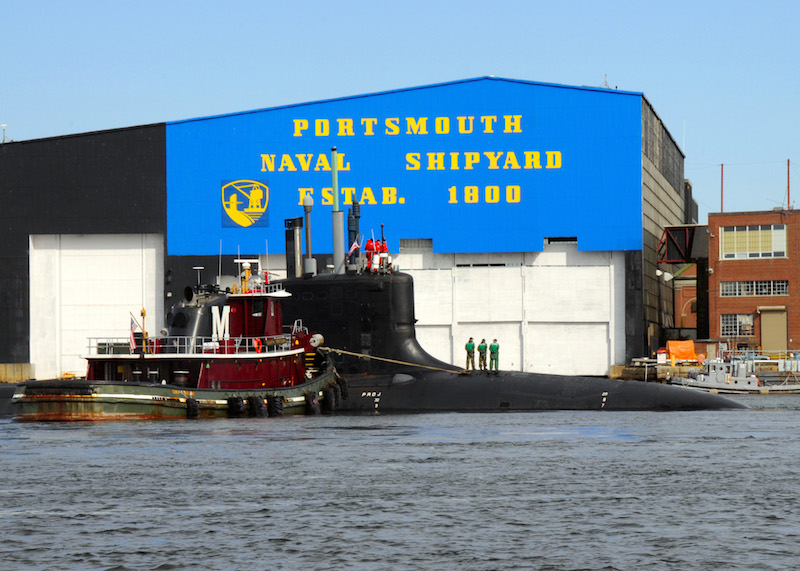Last week, the Navy announced that it is mobilizing 1,629 reservists to support aircraft carrier and submarine maintenance at its four public shipyards starting in July. This mobilization will help reduce the maintenance backlog that has developed due to the Covid-19 pandemic.
In March, Naval Sea Systems Command (NAVSEA) authorized weather and safety leave for shipyard personnel who fell under the U.S. Centers for Disease Control and Prevention's (CDC) "high risk" category for extreme complications tied to the coronavirus. With up to 25% of the production workforce unable to report to their duty location, the shipyards have not been able to execute all their work and have built a backlog of work that, if left unchecked, would result in delays in returning ships to the fleet.
The reservists are all part of the Navy's Surge Maintenance, or SurgeMain, program. Established in 2005, SurgeMain has 2,200 enlisted reserve sailors and 240 reserve officers across 75 units and was created to augment the Navy's organic civilian shipyard workforce in times of need.
SurgeMain Sailors have technical and trade backgrounds that allow them to have an immediate impact at the shipyards.
"Our sailors are electricians, pipe fitters, sheet metal workers, plumbers, hydraulic technicians, mechanics, machinists, carpenters, welders and more," said Capt. Michael P. MacLellan, SurgeMain's national director. "Many of our people have prior experience at the shipyard where they're being sent, down to the specific shop where they will be working alongside the shipyard's organic civilian workforce."
This is the first time SurgeMain has activated this many reservists at one time.
"We're excited to mobilize and execute the mission for which we've been training," said MacLellan. "This deployment presents a valuable opportunity for our sailors to hone their skills, contribute to our national defense and allow us to gain valuable lessons you can only learn during mass mobilization."
SurgeMain reservists will start arriving at their respective shipyards in phases starting in early July, with all 1,629 sailors on-site by September 2020. They will be on one-year mobilization orders which may be extended or curtailed should circumstances change. Portsmouth Naval Shipyard in Kittery, Maine, will receive 267 reservists; Norfolk Naval Shipyard in Portsmouth, Va., will receive 486; Puget Sound Naval Shipyard & Intermediate Maintenance Facility in Bremerton, Wash., will receive 676; and Pearl Harbor Naval Shipyard and Intermediate Maintenance Facility at Joint Base Pearl Harbor-Hickam, Hawaii, will receive 200.
"We have been methodical in how we planned this mobilization," said Vice Adm. Tom Moore, NAVSEA's commander. "We did not mobilize anyone who already works in the ship maintenance or construction field, and we worked to place people into shipyards where they have previously drilled so there was a built-in comfort factor for both the reservist and the shipyard personnel."
Once mobilized, the reservists will abide by all Department of Defense travel restrictions and protocols tied to minimizing the spread of Covid-19. Sailors are being assigned to their designated reserve duty location, which is usually the shipyard closest to where they live.
Once at their designated shipyard, sailors will abide by all Covid-19 specific policies. These include conducting a daily self-screening and undergoing a temperature check prior to accessing the shipyard, wearing all required personal protective equipment (PPE) and following the same social distancing measures as the rest of the shipyard workforce.
"We are laser-focused minimizing the spread while maximizing the mission," said MacLellan. "This mobilization will strengthen the partnership between the shipyard workforce and reserve community and help deliver combat-ready ships back to the fleet."





